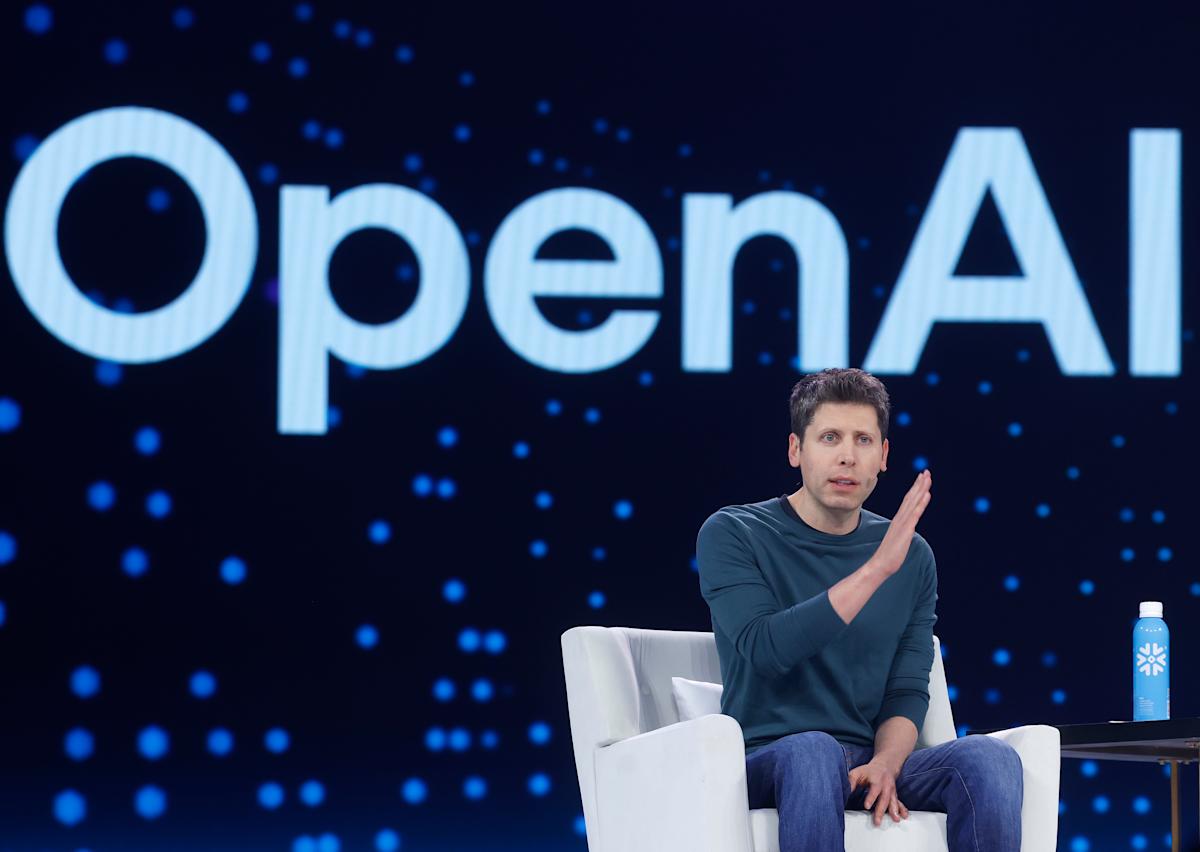OpenAI (OPAI.PVT) would have to spend more than $1 trillion within the next five years to deliver the massive amount of computing power it has promised to deploy through partnerships with chipmakers Nvidia (NVDA), Broadcom (AVGO), and Advanced Micro Devices (AMD), according to Citi analysts.
OpenAI’s latest deals with the three companies include an ambitious promise to deliver 26 gigawatts worth of computing capacity using their chips, which is nearly the amount of power required to provide electricity to the entire state of New York during peak summer demand.
Citi estimates that it takes $50 billion in spending on computing hardware, energy infrastructure, and data center construction to bring one gigawatt of compute capacity online.
Using that assumption, Citi analyst Chris Danely said in a note to clients this week that OpenAI’s capital expenditures would hit $1.3 trillion by 2030.
OpenAI CEO Sam Altman has reportedly floated bolder promises internally. The Information reported in late September that the executive has suggested the company is looking to deploy 250 gigawatts of computing capacity by 2033, implying a cost of $12.5 trillion.
But there’s no guarantee that OpenAI will have the capital to support the costs required to achieve its goals. While OpenAI’s costs are set to soar to more than $1 trillion, Citi estimates the company’s revenue will climb to a fraction of that figure — $163 billion — by 2030.
That disconnect has added to Wall Street concerns over a stock market bubble. Stocks have soared to new records this year largely on investor optimism over artificial intelligence.
OpenAI had already made big commitments to the global AI build-out ahead of its latest deals with chipmakers. The company in September announced a $300 billion deal with Oracle (ORCL) as part of its 10-gigawatt US AI infrastructure project called Stargate. OpenAI has unveiled additional Stargate infrastructure projects abroad in partnership with Nvidia in the United Arab Emirates and Norway. The company also committed $22 billion to purchasing data center capacity from Nvidia-backed AI data center provider CoreWeave (CRWV).
The tangled web of investments among the leading industry players has led to concerns that AI demand could be overstated.
“[OpenAI CEO Sam Altman] has the power to crash the global economy for a decade or take us all to the promised land, and right now we don’t know which is in the cards,” Bernstein analyst Stacy Rasgon wrote in an Oct. 6 note.
Adding to funding concerns, it’s unclear whether US power infrastructure can scale up in time to meet the energy demands of the latest AI projects, which would prevent OpenAI from cashing in on its spending.
OpenAI (OPAI.PVT) would have to spend more than $1 trillion within the next five years to deliver the massive amount of computing power it has promised to deploy through partnerships with chipmakers Nvidia (NVDA), Broadcom (AVGO), and Advanced Micro Devices (AMD), according to Citi analysts.
OpenAI’s latest deals with the three companies include an ambitious promise to deliver 26 gigawatts worth of computing capacity using their chips, which is nearly the amount of power required to provide electricity to the entire state of New York during peak summer demand.
Citi estimates that it takes $50 billion in spending on computing hardware, energy infrastructure, and data center construction to bring one gigawatt of compute capacity online.
Using that assumption, Citi analyst Chris Danely said in a note to clients this week that OpenAI’s capital expenditures would hit $1.3 trillion by 2030.
OpenAI CEO Sam Altman has reportedly floated bolder promises internally. The Information reported in late September that the executive has suggested the company is looking to deploy 250 gigawatts of computing capacity by 2033, implying a cost of $12.5 trillion.
But there’s no guarantee that OpenAI will have the capital to support the costs required to achieve its goals. While OpenAI’s costs are set to soar to more than $1 trillion, Citi estimates the company’s revenue will climb to a fraction of that figure — $163 billion — by 2030.
That disconnect has added to Wall Street concerns over a stock market bubble. Stocks have soared to new records this year largely on investor optimism over artificial intelligence.
OpenAI had already made big commitments to the global AI build-out ahead of its latest deals with chipmakers. The company in September announced a $300 billion deal with Oracle (ORCL) as part of its 10-gigawatt US AI infrastructure project called Stargate. OpenAI has unveiled additional Stargate infrastructure projects abroad in partnership with Nvidia in the United Arab Emirates and Norway. The company also committed $22 billion to purchasing data center capacity from Nvidia-backed AI data center provider CoreWeave (CRWV).
The tangled web of investments among the leading industry players has led to concerns that AI demand could be overstated.
“[OpenAI CEO Sam Altman] has the power to crash the global economy for a decade or take us all to the promised land, and right now we don’t know which is in the cards,” Bernstein analyst Stacy Rasgon wrote in an Oct. 6 note.
Adding to funding concerns, it’s unclear whether US power infrastructure can scale up in time to meet the energy demands of the latest AI projects, which would prevent OpenAI from cashing in on its spending.












Leave feedback about this